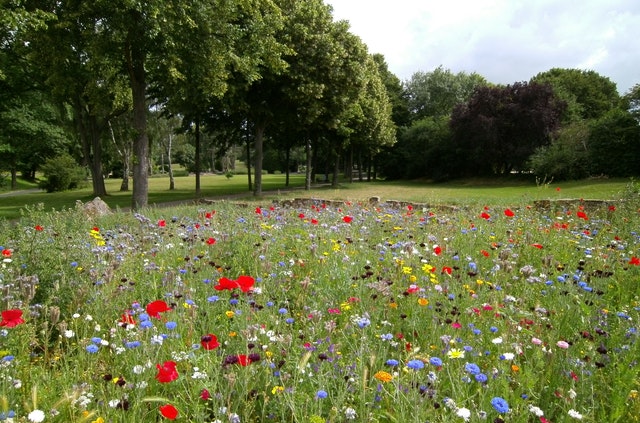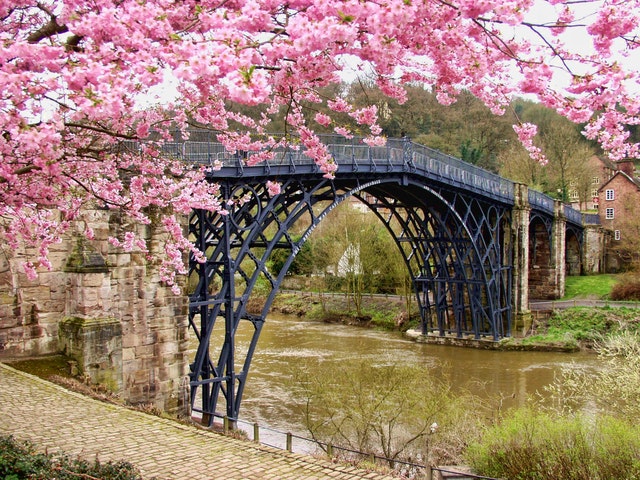Maybe, in a sense—and this is just between you and me—but I think no one’s really attempted a truly modern garden in this sense before. You see either a more contemporary version of one of the traditional garden approaches or else someone makes a garden which looks like a modern painting. You know, having the geometry of a Cubist painting in a way.
Weschler: Say, a Cubist herb garden
Irwin: Right But without any of the underlying rationale; how one looks at things, how one participates in things from a phenomenological point of view. Which is strange, because there’s nothing more phenomenological than a garden.
Weschler: What do you mean by “phenomenological”?
Irwin: well, in the simplest sense, it has to do with seeing, from a kind of a tactile, purely perceptual point of view, rather than seeing as passed through an intellectual, conceptual, literal-minded filter. It’s seeing that requires an individual to weigh the unique qualities of things, a realm where feelings are the equal of intellect, and beauty the equal of truth. Everything is phenomenological to begin with, while at the same time having the potential to be seen as a sign or a symbol and understood in that other sense, so that they’re both true. The emphasis in this case, however, is on the phenomenological qualities of things intersecting over time.
Weschler: And what cubism was about, for example, is getting us closer and closer to a—
Irwin: Well, Cubism was a step along the way, though not the final step. What cubism did was move you from understanding the painting purely from a pictorial point of view—i.e., a reading of the painting with its separation of figure and ground—to that very critical idea of marrying the figure and ground, with its inevitable consequence of a reality made up of conditioned relation. That is, you’re suddenly looking not at a picture of something, but at a picture. Okay? And the humanistic core of the experience comes not through the sign of the human being in the painting, but rather through you, as a human being, participating in the process of the painting.
Weschler: So a Cubist garden that simply did a replication of Cubist shapes in vegetable would—
Irwin: Miss the point, l’m afraid. In other words, it would take on the style of Cubism without necessarily taking on the reasoning of it.
I mean, once you seriously buy into Cubism’s marriage of figure and ground, you’re not just honoring a style—you’re honoring a whole change in how you thing about things. A whole new set of values. A whole new set of values. A whole new way of going in the world. And I find it very peculiar, how many people honor those paintings without somehow being affected by them. People have just accepted those paintings without consciously accepting their implications.
Weschler: Well, having said that, however—you’re saying you don’t want to have a frame anymore, but this garden, if anything, seems to have an exaggerated sense of frame, established by the perimeter of the surrounding buildings.
Irwin: But that was the best part of the whole garden project in a way; it was about things already existing in sets of conditioned relations and not in some sort of vacuum. That was my first dilemma from the beginning, because if you looked at the edge of the garden, you’d say to yourself, “who in their right mind would’ve designed that?”
Weschler: You’re talking about the contour of the surrounding walls and the resultant shape of the-
Irwin: In the simple sense, the space of the garden was not planned. The architecture was planned, all very carefully articulated: how the buildings ended and the edges on them and everything. But there was no consideration of the space that was left in the middle. When I got the space, what was left over is essentially what I got. So in a funny way, the beauty of that situation was, if you could somehow capture that space and make its eccentricities work for you, you would have something which is a total surprise. I mean, it’s wondrous in a way, because who would have thought to do that? No one would think to do it. it goes beyond anybody’s ability to conceive it. But if you can take it and, as it were, caress it into being a piece and a part of this whole thing, then suddenly you have this great element of surprise.
At first, it wasn’t so clear how I was going to be able to do that. At first, I was just going to have the path going down beside the stream. But once I got the requirement of the zigzag foisted upon me, for reasons of handicap access, I suddenly realized that that was how I was going to be able to engage the whole space, weaving in and out, and developing the interplay between the curved and the straight, and more to the point, occasioning an active interplay between the descending viewer and the curved and the straight of the architectural surround. So in a way, I’m in harmony with the place all around, and more so than if I had just aped and repeated the contours, which would’ve been really uninteresting. In other words, the solution did not ignore the architecture at all. In fact, it totally took it into account.
First section of the path curves. Straight. Straight. straight. Curve. Down to there. curve. Straight. Straight. Straight. Curve. Continuous interaction between curves and straights, which is exactly what the architecture is like.
Weschler: One other thought before we start moving down, and this goes back to your Raku point. From here, from above, you don’t have any sense that there’s going to be that azalea maze at the bottom.
Irwin: No.
Weschler: That’s all withheld.
Irwin: That’s a surprise and a reward for making the trip.
Weschler: In Raku terms, that is the cup in the path.
Irwin: In a sense, yes, it is.
Weschler: That’s one of them. Another one being the individual flower later on.
Irwin: Right. Exactly.
Weschler: So at some level, this whole garden is a machine for preparing you to be able to receive things in some sense.
Irwin: In a sense. Now, a Japanese garden would, for example- and they do it very beautifully, and this is not an either/or – but they would bring you all the way down and then at the bottom there would be, precisely, maybe a small pot.
Weschler: Right.
Irwin: A thing, you know, there. Whereas I bring you down, by a series of stages, to where you can appreciate a single flower. It’s the plant material. In other words, it’s not the overlay of that kind of man-made design element. I’d rather, in a sense, you ended up with a flower garden. And finally the piece de resistance of this garden, especially in the summertime, is just its dazzling display of plant material, rich in color and texture and sounds and smells and feelings.
Weschler: Okay, let’s start going down.





